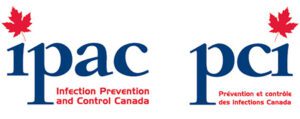When Landlords won’t fix asthma triggers like mold doctors call in the lawyers
 When Landlords won’t fix asthma triggers like mold doctors call in the lawyers.
When Landlords won’t fix asthma triggers like mold doctors call in the lawyers.
Mold, pests and rodents in the home can lead to life-threatening asthma attacks in kids. Increasingly, doctors see this as a medical issue that requires legal intervention.
In the kitchen of her rental home in northwest Washington, D.C., Shelly, a mom of two, points to the sink. “We had a fungus, a mushroom, growing out right here. They fixed that,” Shelly says.
That mushroom was just one sign of the mold that once pervaded the house. Shelly lives in the home with her 7-year-old daughter. She says the mold issues often set off the child’s asthma. “She really couldn’t breathe during those tough times,” Shelly says.
Her daughter frequently ended up in the emergency room. “It’s devastating. It’s given me anxiety. It’s taken away a lot of her education,” Shelly says.
This summer, doctors at an asthma clinic at a local hospital decided Shelly’s daughter needed a different kind of specialist to address this health problem – a lawyer.
When Landlords won’t fix asthma triggers like mold doctors call in the lawyers and that’s how attorney Lacia Japp ended up touring Shelly’s home in late September to check that mold and other health hazards were being fixed. Japp works for a non-profit legal service organization that fights to improve kids’ health.
Doctors call in the lawyers when a low-income family needs help with housing conditions that are harming kids’ health. Often, it’s asthma.
A child with asthma who lives in a low-income community is 20 times more likely to end up in the emergency room than a child in a more affluent neighborhood. One major driving factor is poor housing conditions, https://mapleleafmold.ca/rental-propertie…than-other-homes/
“It could be mice, infestation, rats, roach infestation – it could be a lot of water damage that creates mold and all of that. All of those are allergens and that can exacerbate the child’s asthma,” says a lawyer, Tracy Goodman.
When housing is a medical issue
Goodman says lawyers start off by documenting health-harming conditions in a home and sending a letter to the landlord informing them of their legal obligation to make fixes.
If the landlord doesn’t comply, they’ll take them to a special housing conditions court to force them to make repairs.
And there’s research to back that up. Data points to a finding that that after a legal intervention, kids with asthma experienced fewer trips to the ER and fewer hospitalizations, https://mapleleafmold.ca/is-hidden-mold-a…-making-you-sick/
In fact, some insurers and hospital systems have been subsidizing these legal interventions through grants and other payment arrangements.
There’s so much evidence that shows that what happens in a doctor’s office, in the seven to 10 minutes that someone spends there, is not the best predictor of their overall health and wellbeing – that it is all the other things that occur that impact their health,” Dale says.
The concept of medical-legal partnerships to help improve health outcomes and address persistent health disparities has been around for a few decades, but interest has exploded in recent years, says Bethany Hamilton, co-director of the National Center for Medical-Legal Partnership at George Washington University’s Milken Institute School of Public Health. She says about 500 such partnerships exist across the U.S.
Just last month, Kaiser Permanente announced it was ramping up a program that offers grants to legal aid groups so they can assist its health plan members in fighting evictions. “Sometimes I’m like, why isn’t [the model used] everywhere?” Hamilton says.
And legal interventions can also be cost-effective. Dale co-authored the research with the Children’s Law Center that found that, in the 18 months after a legal intervention, her managed care organization spent an average of $10,000 less on health care for kids with asthma, mostly due to reduced hospital visits. For children with the most severe asthma, the savings were around $60,000.
Cockroaches, rodents and finally, a new apartment
Sometimes an unhealthy living situation can be a critical medical crisis. That was true for Kanna Bowen’s 5-year-old daughter, Deveah, who was admitted to the hospital dozens of times while living in substandard housing.
Bowen moved to D.C. when Deveah was an infant so she could get specialized care at Children’s National Hospital for her severe asthma. Bowen says her first apartment in the city had spiders and mouse infestations that triggered Deveah’s asthma.
“She was sick a lot there,” Bowen says. At one point, Bowen says, Deveah was being hospitalized every three to four weeks. “It was real bad.”
It was a “potentially life-threatening” situation, says Dr. Dale Coddington, one of the pediatricians at Children’s National who treated Deveah during this time.
Coddington referred Bowen to Children’s Law Center. They helped her find a second apartment through the subsidized housing program she relies on, but it turned out to be even worse. She says the outside looked like an abandoned house. Inside, there was lots of visible mold, water stains from leaks, rodents and roaches everywhere.
“It was like a pile of roaches – and one in my refrigerator,” she recalls. She says they bit her while cooking and infiltrated her bed. “It was bad.”
Bowen says she tried to get the property manager to fix things but her requests were ignored. So her attorney at Children’s Law Center, Ashley Close, took the landlord to court. A housing inspector found extensive problems. Close says carrying out the repairs would have required Bowen to move out of the unit.
A lawyer for Bowen’s former landlord said that “the landlord did not know that there were repairs needed until the tenant filed a court case.” The lawyer said the landlord took action to remedy the situation.
Close says the landlord offered to either put her client in a hotel or settle the case. They took the settlement because Kanna Bowen was able to move into another subsidized rental unit.
Tracy Goodman of the Children’s Law Center says it’s often cheaper for landlords to risk paying a fine from the city than it is to make repairs. She says some landlords create shell companies that make it harder to trace them or name them in lawsuits.
“We also see that there are instances of owners that are essentially wanting to push out the low-income residents so that they can redevelop and then rent at higher rates or sell the properties for great profit,” Goodman says.
She says like many other urban areas, cities across North America have a shortage of low-cost housing, which makes it all the more important to make sure that when clients do find a place they can afford, it’s actually livable.
Kanna Bowen says her daughter, Deveah, is in better health since they moved into their new apartment last year. While she still has severe asthma, Bowen says her daughter hasn’t been hospitalized in about a year. “She’s doing way better,” Bowen says.
On the day I visited Bowen’s apartment, Deveah was outdoors playing ball with her dog, Teddy – just like any happy, healthy 5-year-old kid.

Maple Leaf Mold Inc. is a certified mold / asbestos removal and air analysis company located in Toronto that uses IICRC technicians for all testing and remediation projects.
We are a professionally licensed firm experienced in testing, verifying and removing Mold / Asbestos / Lead and other environmental contaminants as well as providing disinfection services to control and kill biological contaminants.
Call 416-254-7256 to talk with us about your issue anytime.




 When Landlords won’t fix asthma triggers like mold doctors call in the lawyers.
When Landlords won’t fix asthma triggers like mold doctors call in the lawyers.